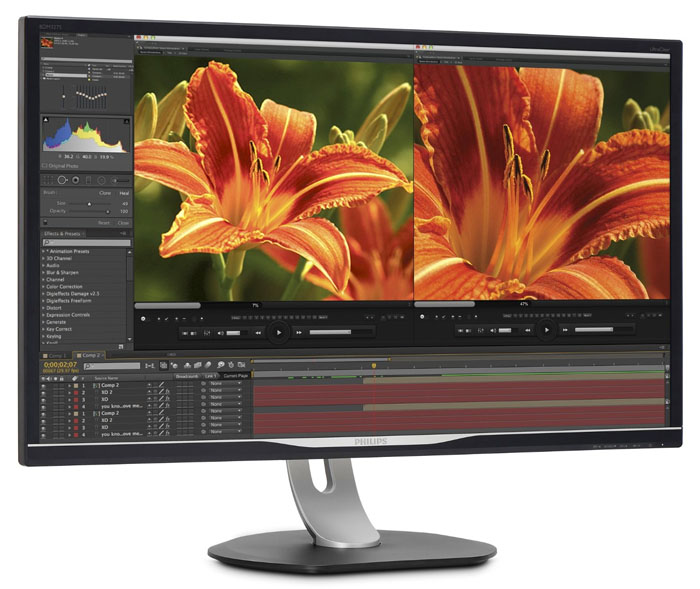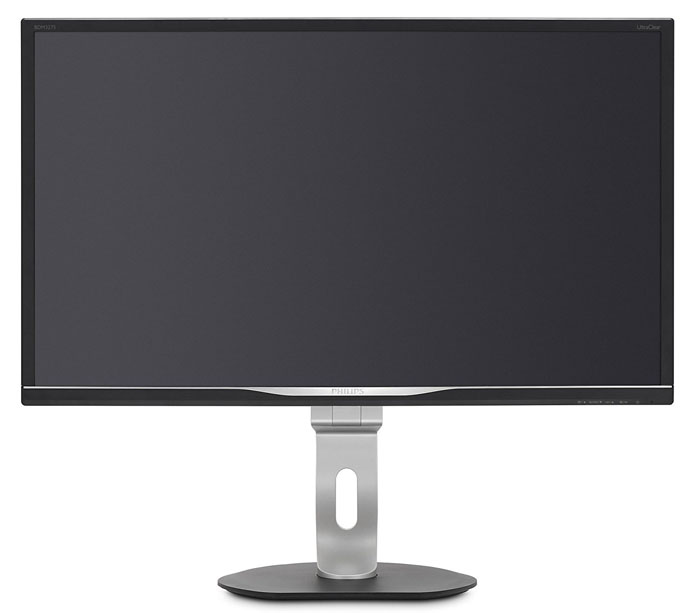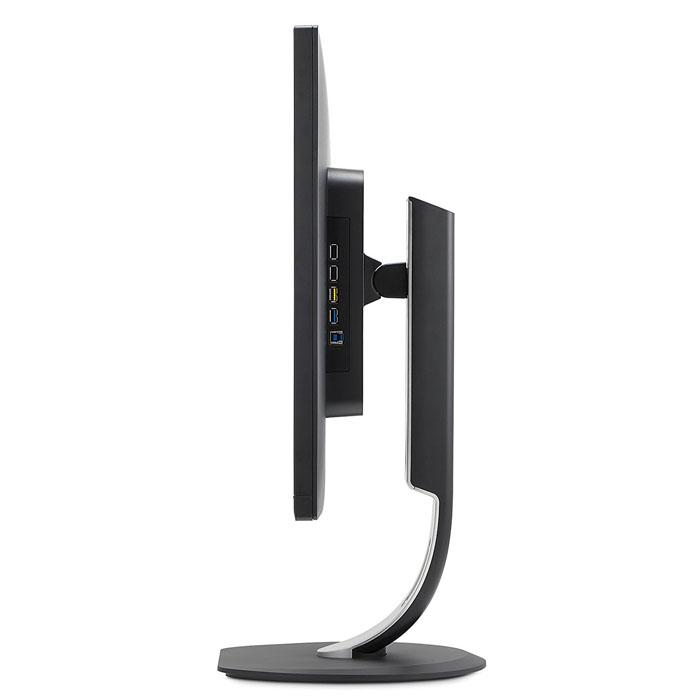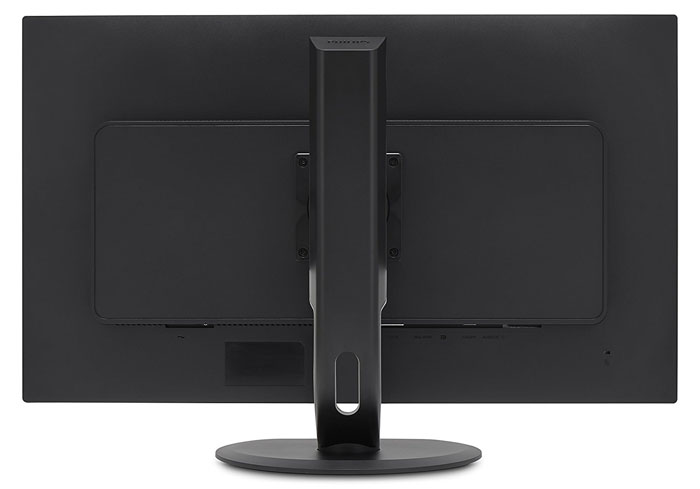Early Verdict
Unless you need the extra speed and adaptive-refresh offered by a gaming monitor, or the wide gamut of a professional screen, the BDM3270 is an ideal product. Its prodigious size will demand a greater space commitment on your desk, but once you see that stunning image with its super accurate color and tremendous dynamic range, we think you’ll find a way to make room. Simply unpack, turn on, and set brightness to taste and you’ll see a picture that’s better than that of many premium displays. We just might be keeping this one around after the review is finished!
Pros
- +
Out-of-box accuracy
- +
Contrast
- +
32-inch VA panel
- +
Value
- +
Build quality
Cons
- -
None of consequence
Why you can trust Tom's Hardware
Introduction
We’ve long touted the virtues of VA panels. With wide dynamic range and super low black levels, image quality is head-and-shoulders above run-of-the-mill IPS and TN monitors. Unfortunately, they haven’t enjoyed the market penetration of the more traditional technologies. One obstacle to their progress is resolution. QHD is currently the highest pixel count you can easily find. But since we prize contrast above resolution, VA will always have a leg up on the competition.

Our current go-to screen is 27" and has QHD (2560x1440) resolution. That pixel density is ideal for workaday tasks and gaming alike. But we’ll never turn down the chance to put a 32" panel on the test bench. We’ve seen superb examples in the past like BenQ’s excellent BL3200PT. Today we’re looking at Philips’ BDM3270. It’s not an entirely new product, but it is updated from last year’s model with a factory calibration and some of the best color accuracy we’ve ever seen.
The BDM3270 is billed as a professional monitor, and although it lacks an Adobe RGB gamut option, it qualifies in every other way. A factory calibration data sheet is included with each sample showing proper adherence to a D65 white point and color gamut errors under 3dE with an average of less than 2dE. We’ll end the suspense now: our sample exceeded its factory measurements by a significant margin.
Philips employs a very high contrast VA panel that measures almost 6000:1 in its default state. There is brightness to spare too. Unlike other 32-inchers we’ve reviewed, this one'll crank out over 300cd/m2, well above its claimed 250.
The backlight is a white LED arrayed at the edges of the screen. It’s flicker-free at all brightness levels, so no need to be concerned about eye fatigue. Color depth is 10-bits native with an internal 12-bit look-up table. Banding will not be an issue with the BDM3270.
Feature wise, this display is packed with everything a graphics pro could need. And the price at this writing is less than $700. It looks like an almost perfect monitor for whatever you'd ask of it. Gamers will decry its lack of adaptive-refresh or high speed, but outside the entertainment sphere, the BDM looks like a potential home run. Let’s take a look.
Packaging, Physical Layout & Accessories
The carton is quite large and could be mistaken for an ultra-wide screen on first glance. The panel, base, and upright are separated by Styrofoam and plastic wrap. It’ll be difficult for shippers to damage this monitor without major effort.
The power supply is internal, so you get an IEC cord. You also get DVI, DisplayPort, and VGA cables along with USB 3.0 and an analog audio connector. There’s no CD in the box, but we quickly found and downloaded the user manual from Philips’ website. Assembly requires a Phillips-head screwdriver to attach the upright to the panel. It doesn’t simply snap on like most other monitors. The base attaches with a captive bolt to create a hefty and solid package.
Product 360




Any 32” monitor requires substantial desktop space and the BDM3270 is no exception. The base is quite large both in width and depth. You won’t have any fears of a tip-over here. The anti-glare layer is shinier than most, and because of its prodigious area, requires careful placement to avoid unwanted reflections. The upside is that it’s extremely clear and sharp. The finest picture details pop from the screen providing an almost visceral experience.
OSD controls consist of small touch-sensitive keys at the bezel’s lower right. They operate with precision, but as always, we wished for a joystick. Luckily you won’t have to do much in the menu besides adjust brightness. Calibration is definitely not required here.
The upright offers firm and precise adjustments. Height moves through a range of 7", and you get 170° of swivel in each direction along with 20° of back tilt and 5° forward plus a portrait mode. The stand and its associated hardware are equal to any high-end monitor we’ve worked with. If you want to use your own mount, 100mm VESA mount lugs are provided.
On the side is a large USB hub with an upstream port and four downstream ones. Two are version 3.0 and two are version 2.0. One can charge devices when the monitor is turned off. On the bottom are the video inputs which include one each of DVI, HDMI, DisplayPort, and VGA. Analog audio is supported with a single 3.5mm input and a headphone output.
MORE: Best Computer Monitors
MORE: How To Choose A Monitor
MORE: Display Calibration 101
MORE: The Science Behind Tuning Your Monitor
MORE: All Monitor Content

Christian Eberle is a Contributing Editor for Tom's Hardware US. He's a veteran reviewer of A/V equipment, specializing in monitors. Christian began his obsession with tech when he built his first PC in 1991, a 286 running DOS 3.0 at a blazing 12MHz. In 2006, he undertook training from the Imaging Science Foundation in video calibration and testing and thus started a passion for precise imaging that persists to this day. He is also a professional musician with a degree from the New England Conservatory as a classical bassoonist which he used to good effect as a performer with the West Point Army Band from 1987 to 2013. He enjoys watching movies and listening to high-end audio in his custom-built home theater and can be seen riding trails near his home on a race-ready ICE VTX recumbent trike. Christian enjoys the endless summer in Florida where he lives with his wife and Chihuahua and plays with orchestras around the state.
-
Terrific black levels and contrast ratios there! Those are main things that I hate about IPS panels. Wish it was 4K though, since I'd rather not downgrade in PPI from the 27" 1440 display I got half a decade ago.Reply
-
Nice to see VA panels getting some love. I've had a 32" Samsung S32D850T for about 2 years now. It uses the same panel as the BenQ BL3200PT mentioned on the first page. I wouldn't trade the picture quality for anything and I use it primarily for gaming.Reply
-
sillynilly Nice review and panel - confused though you say it is selling for less than $700, but the link shows $379 (which is amazing if it is the same monitor). At that price point it is a great monitor for everyday use and I may be buying one to replace my old 1440 IPS used for daily tasks.Reply
EDIT: It is the same, but just not available for at least 1-2 months, which I read to mean as never. Maybe being phased out? -
theusual Their manual says it can handle up to 76 hz vertical refresh rate. Have you attempted this?Reply -
theusual Oops. I see that is at 1440x900. Only 60Hz at full resolution. I wouldn't want you to damage your monitor attempting it.Reply -
mapesdhs It's a shame you've not reviewed the Philips BDM3275UP, an UHD model using similar technology.Reply
Re the page about the OSD, one thing is missing: are the menus decently readable? I've read compaints about this concerning Philips monitors on seller sites. Also, re the model I cite above, several owners report annoying vertical banding issues which required model replacement; did you see any sign of this with the 3270?
Ian.
PS. Please do something about these stupid popup videos, they are really annoying. They block the navigation menus and are visually very irritating. Whoever thought they were a good idea, they're wrong. -
uglyduckling81 Reply19385794 said:PS. Please do something about these stupid popup videos, they are really annoying. They block the navigation menus and are visually very irritating. Whoever thought they were a good idea, they're wrong.
Add NoScript to your Firefox browser. Allow tomshardware.com, ajax.googleapis.com, and best of media.com
Add on Ublock Origin.
You won't see videos or ads. Makes for a great browsing experience. Of course you have to set up which scripts to allow for each site you go to. WCCFTech for instance has about 30 scripts of which I allow 1 maybe 2 to get the full experience but still block all the spying and data wasting downloads.
I'm on very limited download quota this year so every byte counts. Plus it speeds up my web page loading. -
hixbot I'm still waiting for a QHD/4k PVA 120hz+ panel with strobing and Gsync/freesync that isn't curved!Reply
I can't stand the contrast ratios of IPS, and I'm not interested in all these curved PVA gaming panels. I want a flat PVA gaming panel that is atleast QHD.